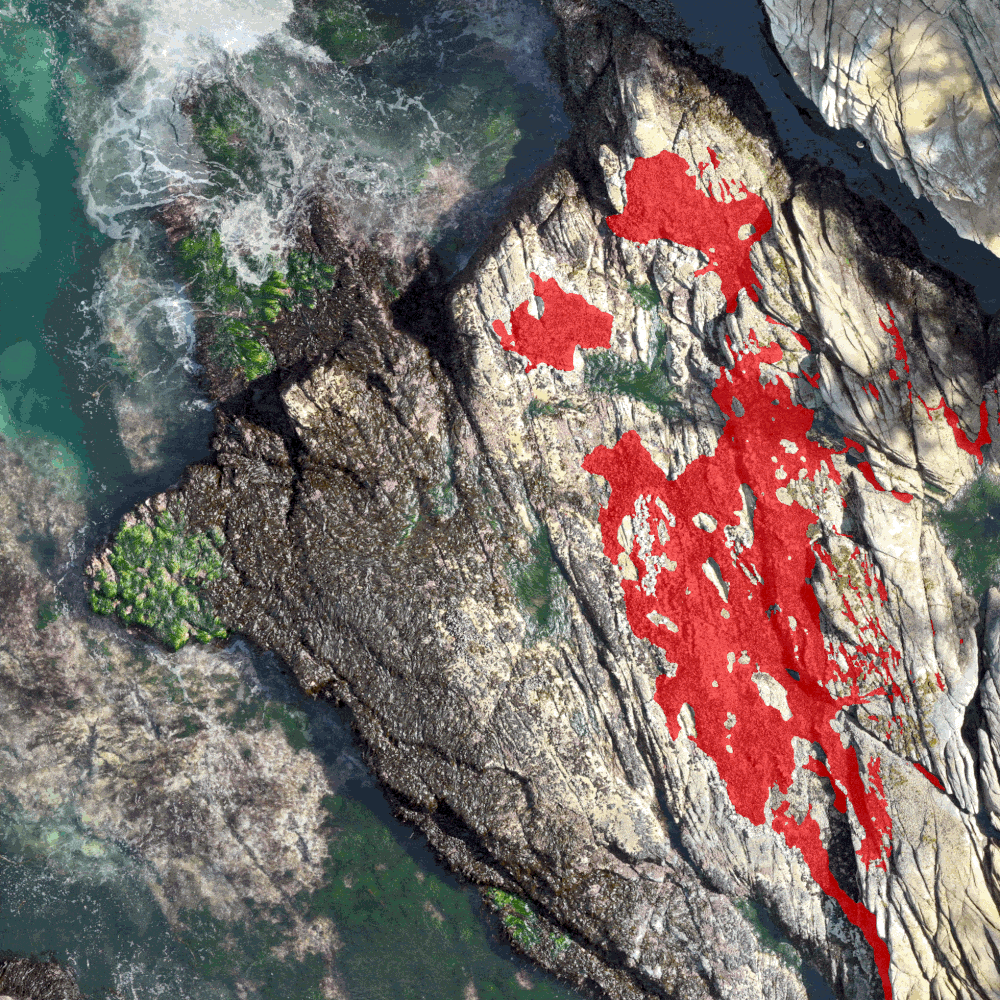The Building Bridges initiative of Canada’s Ocean Supercluster (OSC) aims to accelerate the use of artificial intelligence (AI) in the ocean sector. As a Building Bridges partner, the Hakai Institute has begun automating the process of mapping coastal mussel beds by using convolutional neural networks.
The rocky intertidal zone is an area of high biodiversity; mussel beds are a vital component of this ecosystem, creating habitat and providing an important food source for other organisms. Climate change and associated sea-level rise are subjecting this domain to increasing stress, and there is a resultant need to monitor these changes to better assess the health and resilience of blue mussels (Mytilus edulis) and California mussels (Mytilus californianus).
The Hakai Institute has been monitoring mussel beds on the Central Coast for nearly a decade via nearshore field studies performed in situ by researchers, and through annual drone surveys. The Institute has been a leader in deploying drones to extend our observational reach, allowing researchers to observe sites that are too dangerous or logistically difficult to access.
Traditional methods for processing drone imagery data, however, are time-consuming and expensive. The use of deep neural networks—designed for processing imagery—has resulted in a substantial increase in efficiency, enabling the Hakai Institute to process and analyze vastly greater amounts of imagery. Insights are being shared with the provincial government and First Nation partners within the Marine Plan Partnership for the North Pacific Coast (MaPP), as well as with Parks Canada, Fisheries and Oceans Canada (DFO), and university researchers.
Partners
Hakai Institute is a partner within the Canadian Integrated Ocean Observing System (CIOOS), an open-access platform for sharing information about the state of our oceans. CIOOS is a recipient of funding through the Building Bridges initiative of the Canada Ocean Supercluster—which, as noted above, aims to accelerate AI adoption in the ocean sector, with a focus on not-for-profit organizations. Each CIOOS partner is applying AI to help them achieve their research objectives.
In turn, the Hakai Institute shares insights (including tools and/or data) from the mussel mapping project with a variety of partners, including BC coastal First Nations and DFO, as well as researchers at the University of British Columbia, California State Polytechnic University Pomona, the University of California Santa Cruz, the University of Washington, Oregon State University, the University of Alaska Fairbanks, and the Multi-Agency Rocky Intertidal Network (MARINe).










